Share the successful cases of river crab aquaculture and collect pure dry information quickly.
Boss Li in Jiangsu has two ponds with a total of 52 mu of aquaculture surface, releasing seedlings at the beginning of the year and selling crabs one after another seven days before the Mid-Autumn Festival. as of mid-November, a total of 14370 jin of crabs have been sold, with a yield of 270 jin per mu and a total of 685000 yuan. in addition, mixed-cultured mandarin fish and green shrimp also sold more than 80, 000 yuan, with a total income of 765000 yuan, with a cost of 180000 yuan, a profit of 585000 yuan and a benefit of 11250 yuan per mu. The experience of river crab farmers is introduced as follows:
First, select the site to build the pool and complete the facilities
When selecting the site of the crab pond, we must first consider that the water source is adequate, the water quality is pollution-free, and there can be no industrial, agricultural, urban life, medical waste and other pollution sources that may pose a threat to river crab farming. The water quality has been tested to meet the national fishery water use standards ("Fishery Water quality Standard" GB/T18407.4) and "Environmental conditions of pollution-free Food Freshwater Culture producing areas" NY5361-2010. The new crab pond requires east-west direction, rectangular, the best area of a single pond is 50-80 mu, crab pond with deep water area and shallow water area, adopt digging ditch around (commonly known as "ring ditch") to build embankment, excavated into a crab pond with a depth of 1.5 meters in deep water and 1 meter in shallow water. The suitable ratio of crab pond slope is 1 ∶ 2.5. the drainage and irrigation system should be matched, and the inlet and drainage should be separated. Anti-escape, anti-theft facilities are solid. The method is as follows: on the inside of the pool ridge, the first anti-escape net is built with dense mesh and hard plastic film inverted eaves, and the bottom of the net is fixed into the soil with a stone cage, and the upper mouth is 0.5 meters higher than the highest water level; in the middle of the pool ridge, a second anti-escape wall is built with calcium plastic board, 0.3 meters under the soil and 0.5 meters above the soil; in order to prevent outsiders from entering and preventing theft, a protective net needs to be built on the outside of the pool ridge. At the same time, it is equipped with pump pump and microporous pipeline oxygen enrichment facilities, and can install Oakdan aquaculture water quality detector or Internet of things technology application system if possible.
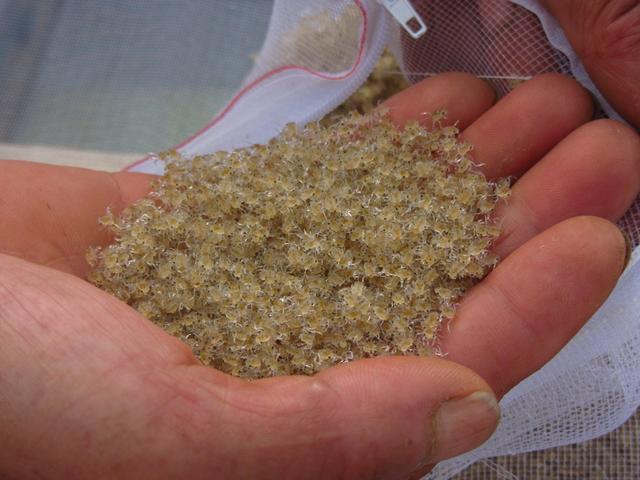
Manager Okedan Jiang
Second, plant aquatic plants and release snails
Before the crab breeding, the crab pond was netted and 3 areas were netted, and three kinds of aquatic plants, such as Elorella verticillata, verticillum verticillata and bitter grass, were planted. Elodea was planted in deep water area or ring ditch at the end of February, and cut into sections with 40kg of seeds per mu, with a row spacing of 3 m × 4 m. At the end of March, sowing bitter grass in the middle of crab ponds, soaking the seeds for 3 to 5 days, rubbing the skin to promote seed germination, adding a small amount of pond mud and water to sow evenly along the shallow water zone, 0.10 × 0.25 kg per mu. Verticillium verticillata was sown in March with 0.5-1.0 kg of seed per mu, and the bud was inserted into the mud or sowed with mud according to row and plant spacing of 0.5 m. The snail was released from February to April, and began to reproduce from April to May after adapting to the crab pond environment. Snail is the most suitable bait for crab species to molt for the first time, so the snail casting time should be early rather than late. Wash the snail first and kill the bacteria and protozoa on the snail with strong chlorine or dibromohydantoin and other drugs. Put fresh snails 250 kilograms per mu and sprinkle them evenly in shallow water. It can also be divided into two stages, and another 150-250 kg from June to August can prevent a large dosage, resulting in thin water quality and mass reproduction of moss in the early stage, thus affecting the growth of river crabs.
Third, select and release crab species and raise fish and shrimp
In order to prevent the specification and quality of purchased crab species from being guaranteed, crab species should be raised by themselves. Crab seedlings should be purchased in large improved breeding farms with authentic parent crab sources and specifications (150 grams of female crabs and more than 200 grams of male crabs). During the breeding period, they should be carried out in strict accordance with the operating rules, and do not abuse drugs to cause damage to organs such as the liver and pancreas of crabs. The stocking time of crab species is from February to March, and the best specification is 160 crabs per kilogram, which should be strictly sorted, and the crab species released in the same pond must be the same. If the crab species with wide differences in specifications are put into the same pond, there will be molting out of sync, resulting in mutual killing and low recapture rate. The stocking density is controlled at about 800 / mu. Generally put 0.5 kg per mu of egg-holding green shrimp, 15 mandarin fish and 50 silver carp and bighead carp per mu from March to May.
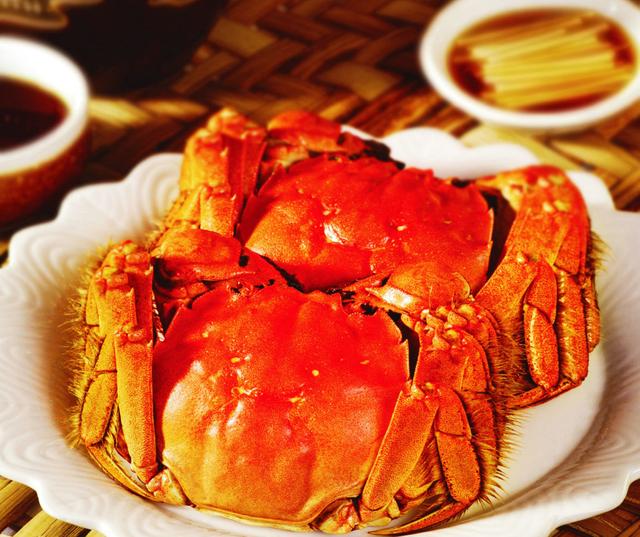
Manager Okedan Jiang
Fourth, accurate feeding and regulation of water quality
The whole course of feed feeding should grasp the "degree". The consequences of excessive refined and excessive feeding are reduced movement of crabs, decay of residual bait, deterioration of water quality, rotten roots of aquatic plants, reduction of dissolved oxygen, outbreaks of cyanobacteria and frequent occurrence of crab disease. Accurate feeding should grasp three key periods before the first molting, during the high temperature season and before and after the last molting. When the water temperature rises to 8: 10 ℃, it is fed with fresh mixed fish, which is 2% to 3% of the body weight of crabs in the pond; from May, the daily feed is gradually increased from 3% to 8%; in the high temperature season, the pellet feed with a protein content of 32% to 38% is fed; in late August, the daily dosage is 8% to 10%, and the feeding time is 5-6 pm. The water quality of crab pond is fresh, live, tender and cool, with a transparency of 0.3 to 0.5 meters, dissolved oxygen above 5 mg / L, pH 7 to 8, ammonia nitrogen not more than 0.2 mg / L and nitrite below 0.02 mg / L.
Strengthen management and control crab disease
First of all, the pond should be cleared and the crab species should be drained for 15 days before stocking, then 100 kg of quicklime per mu will be melted and sprinkled into the whole pond, then the water will be pumped out 7 days later, and then 0.2 meters of fresh water will be filtered and sprinkled with 0.5 kg of strong chloride per mu. Secondly, it is necessary to manage the water well. From June to September, biological agents should be applied every 10 days to regulate the water quality, and the sediment improver should be applied every 5 days to improve the bottom quality, averaging 7-8 times a month to promote the degradation of organic matter in the crab pond and bottom. Third, to protect the grass, according to the growth of aquatic plants, timely adopt the way of cutting, cut off the upper part of Elodea from late April to early July, control it 0.15 meters below the water surface, and remove the aquatic plants floating on the water surface in time. The fourth is to kill insects and disinfect. From the end of April to the beginning of May, ciliates were killed once with drugs such as zinc sulfate. after an interval of 1 to 2 days, bromochlorohydantoin or iodine preparations were used to disinfect the water, and Chinese herbal medicine was used to make granular baits for 5 to 7 days to prevent and prevent diseases. Before the high temperature comes at the end of Meiyu, drugs are again used for prevention to control the occurrence of diseases in the high temperature period. In the middle of September, combined with water disinfection and oral bait, ciliates were killed. During the breeding period, regular sampling inspection, found that there are signs of crab disease, timely take corresponding measures to achieve prevention.
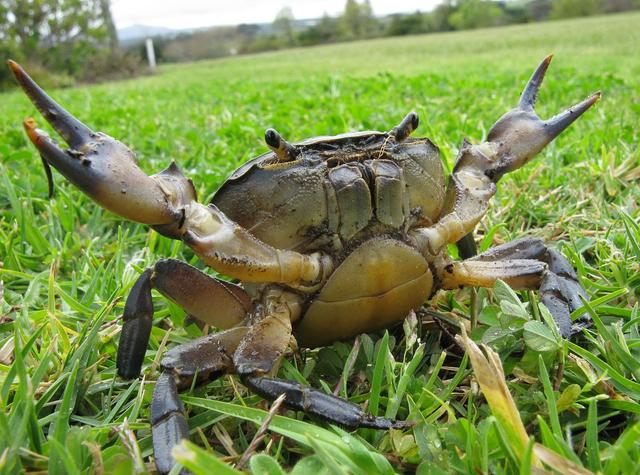
Manager Okedan Jiang
Grasp the market and go public at the right time
The prices of adult crabs, especially large-sized crabs, are relatively high before the Mid-Autumn Festival and National Day, and there is a process of price reduction after the "two sections". Therefore, in terms of management technical measures, it is necessary to make the crabs in the pond reach the standard of plaster fertilizer, yellow feet and hard shell before the "two sections". Depending on the market situation of river crabs, they will be listed for sale at the right time and price.
VII. input-output and benefit analysis
Input: seedling (130000 crabs, shrimp, mandarin fish, silver carp and bighead carp, grass), feed (pellet feed, snail, corn, small miscellaneous fish), water and electricity, medicine, wages, land rent, interest and others. The output includes adult crab, green shrimp, mandarin fish, silver carp and bighead carp.
- Prev
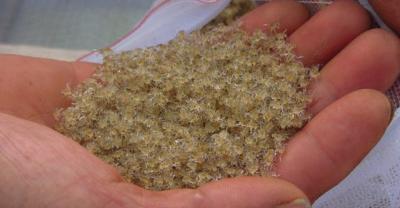
Pay attention to watering and fertilizing Phalaenopsis in water moss culture
I also use water moss to grow Phalaenopsis. The water moss on the surface is often very dry, but the grass below is still wet. What should I do at this time? Is to loose the grass underneath.
- Next
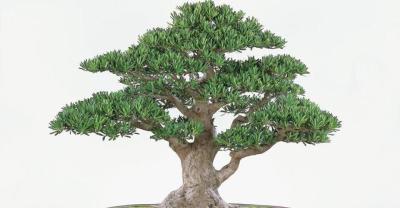
Culture method of indoor ornamental fern Dryopteris Dryopteris
Potted soil to choose to breed wolf tail fern, according to the needs of viewing, to choose flowerpots, high pots or hanging orchids, you can also choose some unique flowers.
Related
- On the eggshell is a badge full of pride. British Poultry Egg Market and Consumer observation
- British study: 72% of Britons are willing to buy native eggs raised by insects
- Guidelines for friendly egg production revised the increase of space in chicken sheds can not be forced to change feathers and lay eggs.
- Risk of delay in customs clearance Australia suspends lobster exports to China
- Pig semen-the Vector of virus Transmission (4)
- Pig semen-the Vector of virus Transmission (3)
- Five common causes of difficult control of classical swine fever in clinic and their countermeasures
- Foot-and-mouth disease is the most effective way to prevent it!
- PED is the number one killer of piglets and has to be guarded against in autumn and winter.
- What is "yellow fat pig"? Have you ever heard the pig collector talk about "yellow fat pig"?

